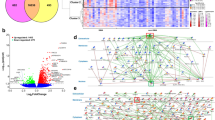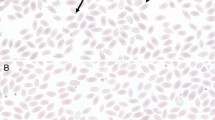Abstract
IN a recent communication discussing the application of the sampling method described by Haldane1, Tweedie2 states that the method was described as a technique for using hæmocytometers. This is not so. Hæmocytometers are designed for estimating the population density per unit volume, and the method under discussion is adapted for estimating the incidence of an attribute in a population consisting of members possessed of that attribute and members not possessed of it. This is an entirely different problem. The method, which has been in use in this Laboratory for a considerable time, and has proved of great value, was designed for estimating the incidence of certain abnormal forms of erythrocytes in blood films, this incidence often being as low as 0·2 per cent. By using this sampling technique, increased accuracy is obtained at these low incidence levels, and a saving of time and labour occurs at high incidence levels.
This is a preview of subscription content, access via your institution
Access options
Subscribe to this journal
Receive 51 print issues and online access
$199.00 per year
only $3.90 per issue
Buy this article
- Purchase on SpringerLink
- Instant access to full article PDF
Prices may be subject to local taxes which are calculated during checkout
Similar content being viewed by others
References
Haldane, J. B. S., Nature, 155, 49 (1945).
Tweedie, M. C. K., Nature, 155, 453 (1945).
Author information
Authors and Affiliations
Rights and permissions
About this article
Cite this article
CASE, R. Inverse Binomial Sampling. Nature 156, 115 (1945). https://doi.org/10.1038/156115b0
Issue date:
DOI: https://doi.org/10.1038/156115b0



